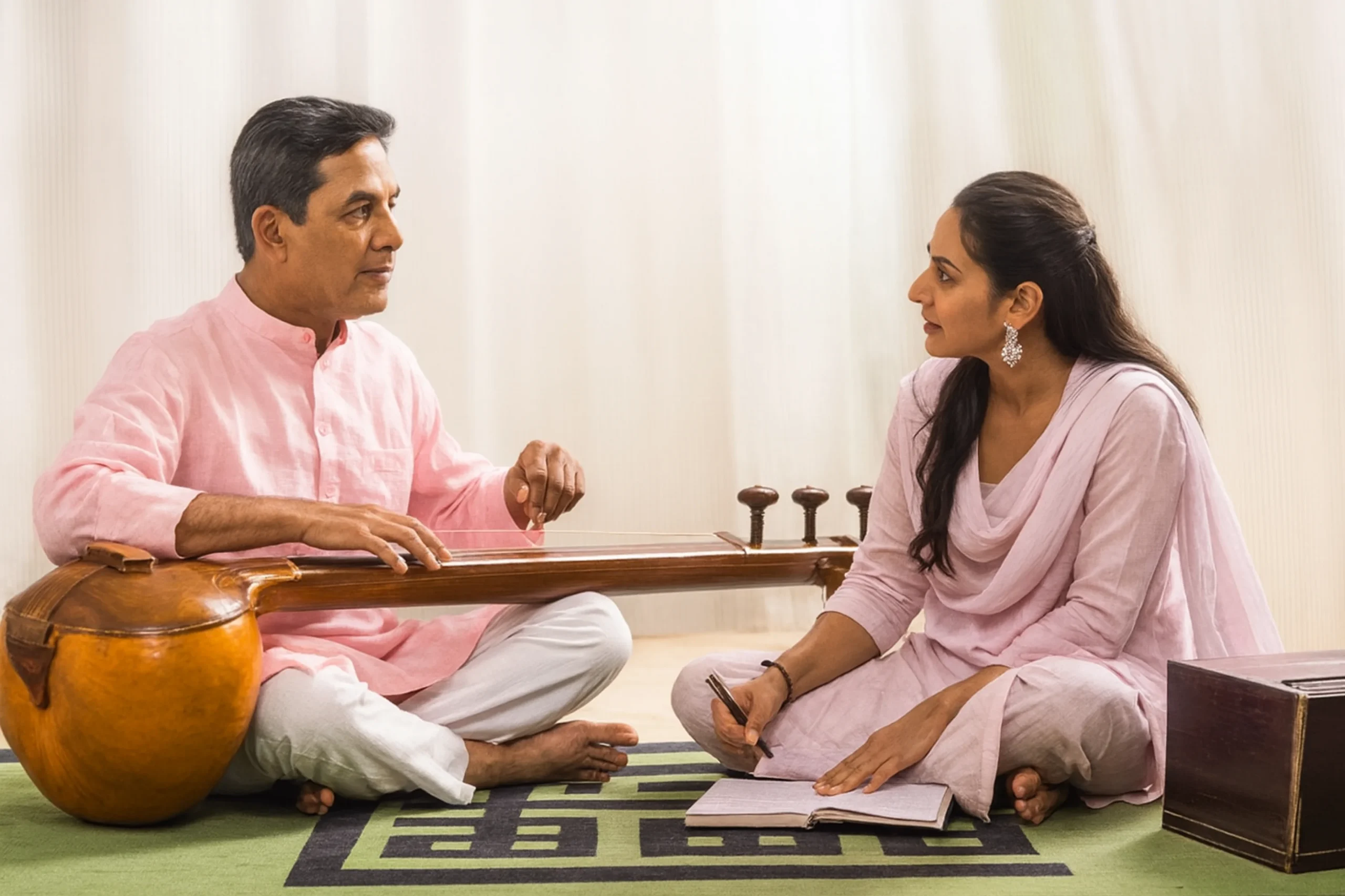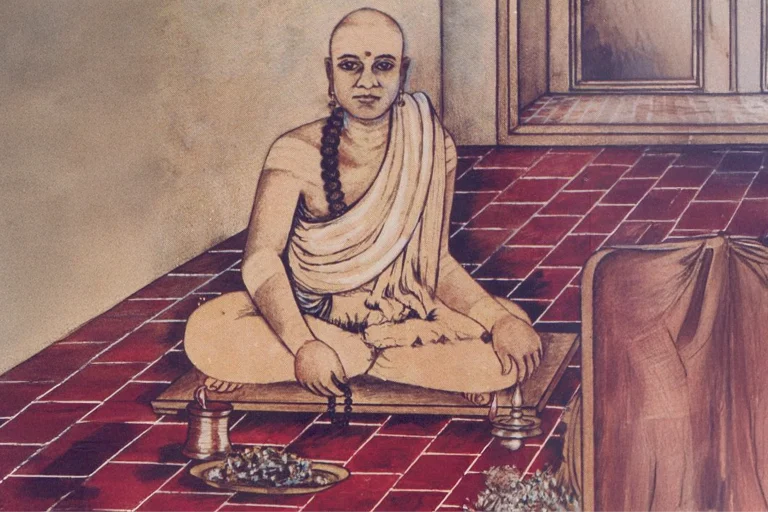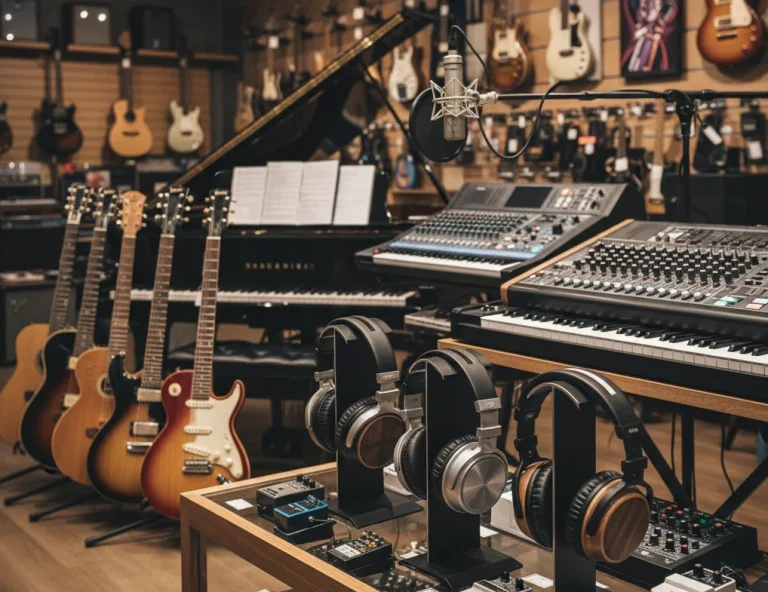All Topics
- Alchemizing Music Concepts for Students
- Artist Spotlight
- artium gift card
- Artium Maestros
- Artium News
- buying guide
- Carnatic Music
- Devotional Music
- Editorials by Ananth Vaidyanathan
- Film Music
- Guitar
- Hindustani Classical Music
- Indian Classical Music
- Indian Folk Music
- Insights
- Instruments
- Karaoke Singing
- Keyboard
- Kids Music
- maestros
- Music Education
- Music for Kids
- Music Industry
- Music Instruments
- Music Legends
- Music Theory
- Music Therapy
- Piano
- piano guide
- Tamil Film Music
- Telugu Film Music
- Time Theory
- Tools
- Uncategorized
- Vocal Singing
- Vocals
- western classical music
- western music
- Western vocal music
Understanding The Basics of Carnatic Music Notation
Understanding The Basics of Carnatic Music Notation

Table of Contents
Carnatic music, the classical tradition of South India, is one of the oldest and most structured musical systems in the world. It beautifully blends devotion, melody, rhythm, and intricate improvisation. Unlike Western notation, which relies heavily on staff lines and clefs, Carnatic music follows a unique system of swaras (notes) and rhythmic patterns that capture both melody and soul. To truly appreciate and perform Carnatic music, understanding its notation is essential, as it acts as the foundation upon which compositions, improvisations, and creative expressions are built.
This notation system helps learners identify ragas (melodic frameworks) and talas (rhythmic cycles), both of which form the backbone of Carnatic compositions. For beginners, this can seem complex at first, but once you grasp how notes and patterns interconnect, the beauty of the system becomes evident. Whether you are a beginner learning your first geetam, an intermediate student exploring varnams, or an advanced vocalist improvising alapana, understanding Carnatic notation opens doors to deeper musical insight.
Let’s delve into the key aspects of Carnatic music notation and explore how modern learners, primarily through online music platforms, can effectively master these foundational concepts.
The Foundation of Carnatic Notes
At the heart of Carnatic music lies the concept of swaras, the building blocks of melody.
Learn to sing the Carnatic Swaras perfectly:
There are seven basic swaras:
Sa, Ri, Ga, Ma, Pa, Da, Ni, which correspond to S, R, G, M, P, D, N in notation.
These are similar to the seven notes in Western music (Do, Re, Mi, Fa, So, La, Ti). Still, in Carnatic music, each note can have multiple variations, creating a rich palette of melodic possibilities. For instance:
- Rishabham (Ri) can have 3 variants – R₁, R₂, R₃
- Gandharam (Ga) – G₁, G₂, G₃
- Dhaivatam (Da) – D₁, D₂, D₃
- Nishadam (Ni) – N₁, N₂, N₃
Shadjam (Sa) and Panchamam (Pa) remain constant. These subtle variations define different ragas, allowing each one to express a unique emotional flavor (rasa).
Understanding how these swaras function helps learners accurately interpret notation. Carnatic compositions are usually written in a simplified symbolic form where each swara corresponds to a syllable and duration.
For example, Sa Ri Ga Ma | Pa Da Ni Sa represents one octave ascending (Aarohana).
Carnatic Music Notation Explained
Carnatic music notation is a symbolic representation of melody (swaras) and rhythm (tala). It helps musicians understand and accurately reproduce compositions. The notation system uses seven swaras (notes) – Sa, Ri, Ga, Ma, Pa, Da, Ni, represented as S, R, G, M, P, D, N.
Each swara can exist in different pitch variations, giving rise to various ragas. The rhythmic structure (tala) is denoted using vertical bars and spaces, dividing the composition into beats and cycles.
Diagram Representing Basic Carnatic Notation Structure
| S R G M | P D N S | → Aarohana (ascending scale)
| S N D P | M G R S | → Avarohana (descending scale)
(•) Below a note = lower octave (Mandra Sthayi)
(•) Above a note = higher octave (Tara Sthayi)
Vertical bar “|” = beat divider
Double bar “||” = end of cycle
Example: Mayamalavagowla Raga
Arohanam (Ascending scale):
S R₁ G₃ M₁ P D₁ N₃ Ṡ
(Sa Ri1 Ga3 Ma1 Pa Da1 Ni3 higher Sa)
Avarohanam (Descending scale):
Sạ N₃ D₁ P M₁ G₃ R₁ S
(Higher Sa Ni3 Da1 Pa Ma1 Ga3 Ri1 lower Sa)
This raga’s structure forms the foundation for beginner exercises, such as Sarali Varisai and Janta Varisai.
Explanation Of Carnatic Notation
Carnatic notation differs from Western sheet music because it focuses on relative pitch rather than absolute notes. The “Sa” can start from any base frequency (Shruti), allowing for flexibility in every performer’s approach. Dots above or below swaras indicate the octave, while rhythmic spacing defines note duration.
This system ensures that compositions preserve their melodic essence while allowing creative improvisation. For learners, understanding this notation bridges the gap between theory and performance, helping them decode Geetams, Varnams, and Kritis accurately.
Keyboard Carnatic Notes: Bridging Tradition with Modern Instruments
While traditionally sung or played on music instruments like the veena or violin, many learners today explore Carnatic notes on the keyboard or piano. This approach bridges classical learning with modern instruments, making it easier to visualize pitch relationships.

On a keyboard:
- The note Sa can correspond to C (if C is chosen as the base note).
- Then, Ri, Ga, Ma, Pa, Da, Ni, and higher Sa correspond to the subsequent notes, depending on the chosen raga’s scale.
For example, in the Mayamalavagowla raga (the beginner’s foundational scale), the notes correspond as:
C (Sa), C# (Ri₁), E (Ga₃), F (Ma₁), G (Pa), G# (Da₁), B (Ni₃), C (Sa’).
Learning Carnatic notation on the keyboard helps students:
- Develop pitch accuracy.
- Understand note intervals visually.
- Practice scales (ragas) systematically.
Platforms like Artium Academy guide learners in mapping traditional Carnatic swaras to modern instruments, such as keyboards and digital pianos, making classical learning more accessible and relatable for today’s generation.
Explore: Online Piano Tool
Understanding Carnatic Sangeetam Notes
“Carnatic Sangeetam” refers to the entire musical system of South India, encompassing melody, rhythm, and expression. The notation system used in Sangeetam captures these intricacies. Unlike Western music’s fixed notation, Carnatic notation emphasizes swaras (melody) and laya (rhythm) together.
Each composition is built within a raga (melodic framework) and a tala (rhythmic cycle). For example:
Raga: Sankarabharanam (like the Western major scale). The rāga Sankarabharanam is one of the most popular and foundational melakarta ragas in Carnatic music. It corresponds closely to the major scale in Western music.
Notes of Sankarabharanam:
Aarohana (Ascending scale):
S R₂ G₃ M₁ P D₂ N₃ Ṡ
Avarohana (Descending scale):
Sạ N₃ D₂ P M₁ G₃ R₂ S
Explanation:
- S (Shadjam)
- R₂ (Chatusruti Rishabham)
- G₃ (Antara Gandharam)
- M₁ (Shuddha Madhyamam)
- P (Panchamam)
- D₂ (Chatusruti Dhaivatam)
- N₃ (Kakali Nishadam)
This raga evokes feelings of devotion, serenity, and happiness. Many compositions, such as Endaro Mahanubhavulu and Swara Raga Sudha, are set in Shankarabharanam.
- Tala: Adi Tala (8-beat cycle).
Notation typically uses dots above or below swaras to indicate octave changes:
- A dot below a note (e.g., Sạ or Sa̱) = lower octave (mandra sthayi)
- A dot above a note (e.g., Ṡa) = higher octave (tara sthayi)
For rhythm, the duration of each note is indicated by spacing and vertical bars “|” for beat divisions. This notation allows vocalists and instrumentalists to synchronize perfectly within a tala cycle.
Understanding this notation empowers students to read and reproduce compositions like Geetams, Varnams, and Kritis with accuracy—core milestones in a student’s Carnatic journey.
Beginner Carnatic Music Notes: The First Step
For beginners, the learning journey begins with Sarali Varisai, Janta Varisai, and Alankaras—the foundational note exercises. These patterns train the ear, voice, and fingers to navigate different swaras and talas.
- Sarali Varisai: Simple ascending and descending note sequences (e.g., Sa Ri Ga Ma | Ma Ga Ri Sa).
- Janta Varisai: Double-note exercises that strengthen swara clarity (e.g., Sa Sa Ri Ri Ga Ga).
- Talas in the Context of Alankaras: Notation in Carnatic music serves as a visual guide to understand the placement of swaras and rhythmic patterns. Alankāras, which are rhythmic note exercises, are set in various tālas (rhythmic cycles), such as Adi, Rupaka, and Eka tāla.
Each tāla provides a rhythmic framework that helps learners internalize timing, coordination, and precision. By practicing Alankāras in different tālas, students develop both melodic fluency and rhythmic discipline. This systematic approach strengthens foundational skills, making it easier to perform complex compositions accurately while maintaining laya (tempo) and tāla awareness.
Beginners learn all these exercises in the raga Mayamalavagowla, which provides a balanced structure of swaras. This raga acts as a “training scale” due to its symmetric note arrangement and clarity.
Understanding notation at this stage helps students identify swara positions, raga frameworks, and tala alignment, essential skills for mastering compositions later. With consistent practice and guidance from experts, learners quickly move to singing Geetams and Varnams.
Carnatic Notes for Songs
After mastering note exercises, learners progress to learning songs (Kritis, Varnams, and Keertanas). Each song in Carnatic music is written using notation that captures melody and rhythm simultaneously.
For example, in the popular kriti “Vatapi Ganapatim Bhajeham” (Hamsadhwani raga, Adi tala), notation helps break down the song into swara sequences and rhythmic patterns:
S R₂ G₃ P N₃ S – | S N₃ P – | G₃ R₂ S – |
Teachers at the Artium School of Music use detailed notations, along with live demonstrations, to ensure learners understand the relationship between notation and musical expression, making the learning journey both scientific and soulful.
The Artium School of Music: A Hub for Holistic Music Learning
The Artium School of Music, powered by Artium Academy, goes beyond just teaching; it nurtures creativity, discipline, and performance skills. Students learn not only to read and interpret notation but also to apply it in stage performances.
Through live masterclasses, student recitals, and detailed lesson plans, the Artium School ensures that learners internalize notation rather than memorize it. This fosters improvisation, the soul of Carnatic Sangeetam.
You can learn Carnatic music online at Artium, which combines the essence of gurukulam-style teaching with modern technology, ensuring students of all ages and skill levels receive authentic, high-quality instruction from the comfort of their homes.
Explore the: Tanpura / Shruti Box Tool
Explore the: Metronome Tool
The academy also emphasizes the integration of traditional notation with modern digital aids—helping students visualize raga patterns on keyboards, maintain tempo using metronomes, and fine-tune shruti accuracy with tanpuras. This approach seamlessly blends heritage with innovation.
This is an online music platform reviving classical music learning in a modern way. It is a leading online music school dedicated to preserving and promoting India’s classical traditions, including Carnatic music.
The academy offers structured curriculums, beginner-friendly modules, and live classes conducted by industry experts and classical maestros.
In the context of Carnatic music notation, Artium emphasizes:
- Foundational clarity in understanding swaras and talas.
- Interactive practice tools to visualize and hear notation.
- Customized feedback for pitch, rhythm, and pronunciation.
- Progressive modules covering Sarali Varisai to Kritis.
Learners receive comprehensive resources, including guided practice sessions, digital notation sheets, and personalized mentorship—making the process both efficient and inspiring.
Embracing the Language of Melody
Carnatic music notation is not just a system; it is a language of melody that connects generations of musicians. By understanding its swaras, talas, and structure, learners gain access to centuries of tradition and creativity. Whether learning sarali varisai or composing your own kriti, notation acts as a guide and a bridge between mind, soul, and sound.
With institutions like Artium Academy and the Artium School of Music, mastering Carnatic notation has become more accessible than ever. Their expert-led programs, digital tools, and personalized mentorship make learning this divine art both enriching and enjoyable.
So, take your first step into the world of Carnatic music, where every note tells a story, and every melody connects you to the timeless essence of Indian classical heritage.
[Validated by Sidhi Subramanium (Carnatic Music Faculty) at Artium Academy]
Insta Link: https://www.instagram.com/sidhi88/
FAQs
In Carnatic music, there are 12 notes (swarasthanas) derived from the seven basic swaras — Sa, Ri, Ga, Ma, Pa, Da, Ni. Among them, Sa and Pa are fixed, while the others have multiple variants:
- Ri – R₁, R₂, R₃
- Ga – G₁, G₂, G₃
- Ma – M₁, M₂
- Da – D₁, D₂, D₃
- Ni – N₁, N₂, N₃
These 12 swaras form the foundation for all ragas in Carnatic music.
Carnatic swaras are written using syllables called Sargam or Swaras — Sa, Ri, Ga, Ma, Pa, Da, Ni — representing the seven basic notes. Each can have variations (e.g., R₁, R₂, G₂, G₃) depending on the raga. The notation shows pitch and rhythm through swara placement, dots above or below for higher or lower octaves, and symbols for tāla alignment. This structured notation helps learners read, sing, and understand compositions accurately in Carnatic music.
In Carnatic music, the seven notes of Sargam are Sa, Ri, Ga, Ma, Pa, Da, Ni, collectively called the Sapta Swaras. These form the foundation of all ragas. Each swara has specific pitch variations: for instance, Ri, Ga, Da, and Ni have multiple forms, while Sa and Pa remain constant. When sung or played in sequence, they create the swarasthanas, helping musicians build melodies, ragas, and compositions with precision and emotion.
In Carnatic music, the 72 ragas are known as the Melakarta ragas, which are the parent scales or main frameworks from which thousands of other ragas are derived. Each Melakarta raga has all seven notes (sapta swaras) in both ascending (Aarohanam) and descending (Avarohanam) order. They are organized systematically based on the arrangement of notes, especially the variants of Ri, Ga, Ma, Dha, and Ni, forming a scientific foundation for Carnatic music composition and improvisation.
In Carnatic music, the seven introductory notes are represented by symbols called Swaras:
S – Shadjam (Sa), R – Rishabham (Ri), G – Gandharam (Ga), M – Madhyamam (Ma), P – Panchamam (Pa), D – Dhaivatam (Da), and N – Nishadam (Ni).
A dot below a note (Sạ or Sa̱) indicates the lower octave, while a dot above (Ṡ) indicates the higher octave. These symbols form the foundation of Carnatic notation used in learning and compositions.
In Carnatic music, notations are written using the seven swaras: S, R, G, M, P, D, N. A dot below a note (Sạ or Sa̱) shows the lower octave, while a dot above (Ṡ) marks the higher octave. Vertical lines (|) divide beats within a tala cycle, and double lines (||) indicate the end of a section. Lyrics are written below the swaras to indicate alignment with rhythm and melody, facilitating clear practice and performance.
In Carnatic music, notation means a system of writing music using symbols to represent swaras (notes) and rhythm. It helps learners understand how to sing or play compositions correctly without hearing them first. Each swara, S, R, G, M, P, D, N—shows pitch, while lines and dots show rhythm and octave. Notation preserves ancient compositions and ensures accurate learning and performance across generations.
In Carnatic music, there are seven basic swaras (notes) — Sa, Ri, Ga, Ma, Pa, Da, Ni. Among them, Sa and Pa are fixed (achala swaras), while Ri, Ga, Ma, Da, and Ni have multiple variations. This creates a total of 16 varieties of notes used in different ragas. These variations help form unique melodic structures, giving each raga its distinct sound and emotional expression.
In Carnatic music, key factors in notation include swaras (notes), octave signs, tala (rhythm), and lyrics alignment. Dots above or below swaras show higher or lower octaves, while vertical lines (|) divide beats and double lines (||) mark the end of sections. Clear spacing and alignment between swaras and lyrics help maintain rhythm and melody, ensuring accurate understanding and performance of compositions.







